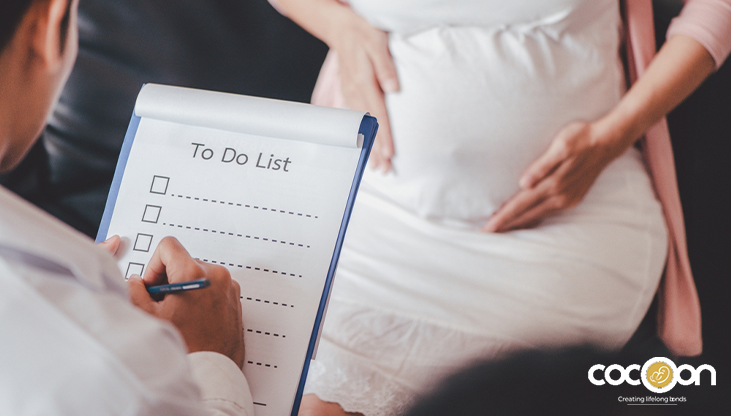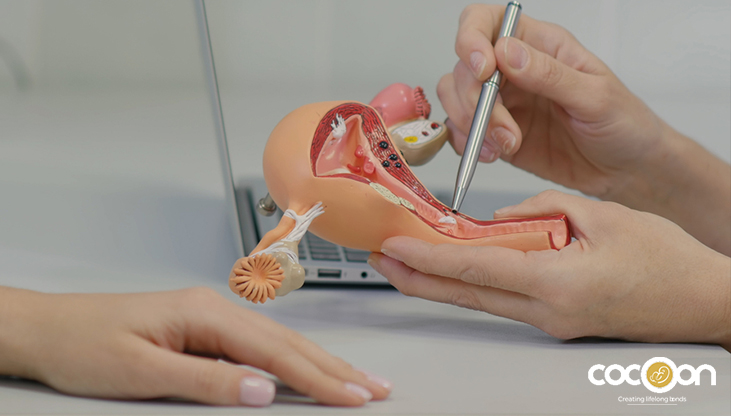While many expectant mothers hope for a medication-free, complication-free birth, it doesn’t just happen by chance. With intentional preparation and consistent practice, that vision can become a safe and confident reality.
In this blog, we’ve outlined gynecologist-approved steps to help you prepare for natural childbirth. From physical conditioning and mental readiness to labor techniques and a week-by-week guide—you’ll find everything you need to feel informed, empowered, and ready for the big day.
Why Choose Natural Birth?
Natural childbirth is a vaginal delivery without medical intervention in the form of epidurals, labor drugs, or cesareans unless medically required. Natural childbirth is the choice of many women since it grants more control, is in accordance with the body's hormonal rhythm, facilitates faster healing after childbirth, and facilitates richer bonding through the skin contact and early lactation. It also gives a rich sense of power and fulfillment on an emotional scale.
Choosing the option of natural childbirth comes with the necessity of preparing—physically, emotionally, and mentally—for the intensity of giving birth.
1. Begin with Education and Awareness
Educating yourself about natural childbirth is one of the best things you can do in preparation for it. If you have an idea of what's happening, you are less likely to be frightened of it—and fear can become a major source of tension during labor.
Consider enrolling in a childbirth education class that focuses on natural labor. Lamaze Method (all breathing and relaxing), the Bradley Method (partner birth), Hypnobirthing (guided imagery and controlled breathing), and the Active Birth Method (freedom of movement) are some of the most well-known ones. These classes cover not only labor stages but also how to cope with labor pain naturally.
Reading positive birth books is also helpful. Books like Ina May's Guide to Childbirth, HypnoBirthing: The Mongan Method, and Natural Childbirth the Bradley Way can greatly affect your state of mind. Inspirational natural birth videos or genuine experiences on the internet can also instill confidence and reduce fear.
2. Prepare Your Body for Labor
When your body is being prepared for natural labor, your daily choices count. Your diet, posture, and exercise all play their part in making the labor experience an effortless one.
Take a healthy diet during pregnancy that will nourish you and your developing baby. Some of the important nutrients and their food sources are:
| Nutrient | Recommended Daily Intake | Best Food Sources |
| Folic Acid | 400–600 mcg | Spinach, oranges, lentils |
| Iron | 27 mg | Beetroot, jaggery, green leafy vegetables |
| Calcium | 1000 mg | Milk, curd, sesame seeds |
| Protein | 75–100 gm | Eggs, legumes, tofu, lean meat |
| Omega-3 (DHA) | 200–300 mg | Walnuts, flaxseeds, low-mercury fish |
| Vitamin D | 600 IU | Sunlight, fortified milk |
Later in your last weeks, supplemental 6 dates daily and raspberry leaf tea (with medical permission) can ripen the cervix and tighten the uterus, potentially assisting labor.
Exercise is also an important part of body conditioning for natural birth. Daily walking enhances circulation, prenatal yoga increases flexibility and relaxation, and squats allow the pelvis to open. Pelvic tilts and Kegels make your pelvic floor muscles strong and reduce discomfort. Always have your healthcare provider's approval before introducing new exercises.
Posture is important, too. Steer clear of slouching, particularly during the third trimester. Sit upright on a chair or birth ball, and sleep on your left side. Proper alignment will guide the baby into an optimal position and can help reduce labor time.
3. Make a Birth Plan That's Yours
A birth plan is a document that outlines your preferences for labor and delivery. It is one of the most useful tools to utilize when communicating your preferences to your medical caregivers.
For a natural birth, your plan can be:
- No epidural unless requested
- Least amount of fetal monitoring
- Freedom to walk around during labor
- Access to water for pain relief
- No routine episiotomy
- Delayed cord clamping
- Immediate skin-to-skin contact
Note that the goal is a healthy delivery. Even with thoughtful planning, birth can be unpredictable. Being flexible is a virtue, not a sacrifice.
4. Master Natural Pain Relief Techniques
Pain management is one of the most effective natural birth skills. Being aware of how to operate your body will calm you and ease your need for medication.
Try these proven comfort techniques for labor:
- Practice slow, deep breathing during each contraction
- Relax in a warm bath or take a soothing shower
- Use counter pressure or massage to relieve tension
- Keep moving—try swaying, walking, or bouncing on a birth ball
- Visualize calming scenes or imagine your baby’s birth
- Make low sounds like moaning or humming to stay grounded
- Use a TENS machine to help ease back pain
Practicing these regularly makes them work more efficiently during labor.
5. Mental Preparation for Natural Birth
Emotional preparation is as much a part of being prepared as physical preparedness. A calm, confident attitude can even lower your perception of pain.
Positive birth affirmations are low-tech, high-impact. Writing them out and posting them in mirrors, or recording them onto calming music can plant the positives deep in your brain.
Hypno Breathing and meditation will help you in mindfulness and emotional resilience. Performing this daily can habituate your nervous system to remain calm even during contractions.
6. Prepare Your Birth Place
No matter where you give birth, your setting needs to be peaceful, private, and safe.
Make your space birth-friendly.
Comfort releases oxytocin—the hormone that inspires contractions and bonding.
7. Use a Natural Birth Preparation Checklist (Week-by-Week)
Below is a week-by-week easy-to-use checklist on body and mind preparations for natural birth:
| Weeks | Preparation Tasks |
| Weeks 20–28 | Begin childbirth classes, start prenatal yoga, and use daily birth affirmations |
| Weeks 28–34 | Finalize hospital or birthing center, start practicing breathing and relaxation |
| Weeks 35–36 | Write your birth plan, try perineal massage, and maintain a nutrient-rich diet |
| Weeks 37–40 | Eat 6 dates daily, drink raspberry leaf tea, and practice labor positions |
| Week 40+ | Stay physically active, mentally relaxed, and trust the birth process |
This checklist brings things into alignment and makes you feel safe as you get close to your due date.
8. Trust the Process—and Yourself
Natural birth is rooted in trust— trust in your body, your preparation, and your baby. Every contraction has a purpose, helping your body do what it was designed to do. Your body knows what to do—often better than your mind thinks it does.
And if your birth doesn't follow the script? That’s okay, too. An empowered birth isn’t about everything going “perfectly”—it’s about feeling informed, supported, and cared for throughout the journey.
Conclusion
A natural birth is all about preparation. The choices you make today—what you eat, how you move, what you think— are all shaping you for your birth experience tomorrow.
- Feed your body good food.
- Condition your mind to stay calm.
- Breathe and move gently.
- Trust yourself.
Your body knows what to do. You are ready to welcome a tiny human in this world.

















